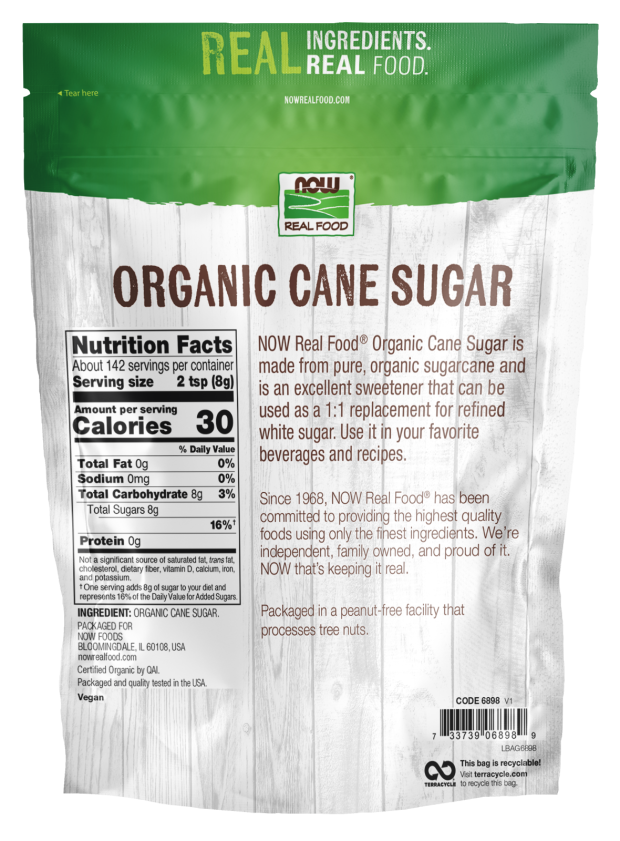Cane Sugar Processing: Traditional Approaches and Modern Innovations
Cane Sugar Processing: Traditional Approaches and Modern Innovations
Blog Article
A Thorough Overview to the Environmental Effect and Sustainability Practices in Walking Cane Sugar Processing
The ecological impact of walking stick sugar handling provides a complicated variety of obstacles that warrant careful assessment. From dirt degradation and excessive water usage to the carbon footprint linked with farming and production, the repercussions of conventional methods are far-reaching. What certain methods can be implemented to strike a balance between productivity and environmental stewardship?
Review of Walking Cane Sugar Processing
Walking stick sugar processing includes a series of systematic actions that change sugarcane into polished sugar. Initially, harvested sugarcane is delivered to refining centers, where it undertakes cleansing to eliminate dirt and debris. Following this, the walking stick is squashed to draw out juice, which is then cleared up by eliminating contaminations through home heating and the enhancement of lime.
The clarified juice undergoes evaporation, where water is gotten rid of to focus the sugar material. These crystals are separated from the remaining syrup utilizing centrifugation, resulting in raw sugar.
The final product is then dried and packaged for distribution. Throughout this whole process, keeping effectiveness and top quality control is vital to make sure the sugar satisfies industry standards. Each action in walking stick sugar handling not only adds to the final product yet additionally has implications for source use and waste generation, setting the stage for discussions on sustainability and environmental impacts related to sugar manufacturing.
Ecological Difficulties of Manufacturing
The manufacturing of walking stick sugar offers numerous considerable ecological obstacles that warrant attention. One primary concern is the substantial use of agrochemicals, including fertilizers and chemicals, which can cause soil deterioration, biodiversity loss, and contamination of neighborhood water resources. The drainage from sugarcane areas usually lugs these chemicals right into neighboring communities, interrupting marine life and affecting the health of areas reliant on these water bodies.
An additional challenge is the high energy consumption connected with sugarcane processing. The boiling and refining phases need substantial warm, mostly produced by burning fossil gas, contributing to greenhouse gas exhausts. In addition, the extensive acreage needed for sugarcane growing can cause deforestation and habitat devastation, further intensifying climate change and threatening wildlife.
Furthermore, the labor methods in some regions elevate ethical issues, as employees may encounter poor working conditions and inadequate wages. This circumstance often perpetuates a cycle of hardship in local areas. Cane Sugar Processing. Addressing these environmental challenges is essential for establishing more lasting techniques in walking stick sugar manufacturing, ultimately profiting both the atmosphere and the areas entailed in this industry
Water and Land Use Effect
Water sources and land usage are vital parts in the cane sugar industry that significantly affect the setting. The cultivation of sugarcane calls for considerable water input, with estimates suggesting that it can take in up to 2,000 litres of water per kilogram of sugar produced. This extensive usage of water often brings about depletion of regional water sources, impacting not just the sugarcane vineyards yet likewise bordering ecosystems and areas that count on the exact same water resources for agriculture and domestic use.

Moreover, land use for sugarcane farming can cause deforestation and the conversion of all-natural environments right into monoculture plantations. This method diminishes biodiversity, interferes with neighborhood environments, and adds to soil destruction. The growth of sugarcane areas frequently intrudes on important agricultural land, creating competition for sources between food and biofuel manufacturing.
Lasting techniques, such as enhancing irrigation techniques and applying crop rotation, are vital to minimize these effects. By Visit Your URL taking on extra reliable water use and land management strategies, the walking stick sugar sector can reduce its eco-friendly impact, ensuring a balance in between agricultural productivity and environmental conservation.
Greenhouse Gas Emissions
Greenhouse gas discharges stand for a significant environmental worry within the cane sugar processing market, especially as farming techniques broaden to meet global demand. The growing of sugarcane, a crop that prospers in tropical environments, counts greatly on synthetic plant foods and pesticides, which contribute to laughing gas discharges. Additionally, land-use modifications, including deforestation for new sugarcane vineyards, release carbon dioxide saved in vegetation and dirt.
Throughout handling, energy usage is another significant resource of greenhouse gas emissions - Cane Sugar Processing. Several sugar mills use fossil fuels to power equipment and produce warm, resulting in significant carbon footprints. Moreover, the transportation of raw sugarcane and finished items adds layers of exhausts via fuel combustion in automobiles
This involves reviewing current farming methods, processing techniques, and transport systems to identify locations for renovation and mitigation. Dealing with greenhouse gas discharges is crucial for cultivating a much more lasting walking cane sugar industry in an altering environment.

Lasting Practices and Innovations
Sustainable practices and developments are increasingly vital in the walking cane sugar processing market as stakeholders look for to decrease environmental influences while keeping productivity. One substantial innovation is the implementation of integrated plant management, which optimizes resource use by incorporating dirt management, parasite control, and crop rotation techniques. This method enhances yield while reducing chemical inputs and protecting soil wellness.
Moreover, the adoption of eco-friendly energy resources, such as biomass from sugarcane residues, has obtained grip - Cane Sugar Processing. By converting waste items into energy, processing facilities can lower their dependence on nonrenewable fuel sources, thus lowering greenhouse gas emissions
Water management methods have additionally seen improvements with the recycling and reusing of water in processing plants, substantially lowering freshwater intake. Technologies in technology, such as accuracy farming, make it possible for farmers to keep an eye on crop health and wellness and resource use better, making certain sustainable cultivation techniques.
Furthermore, accreditation programs like Fair Trade and Rain forest Partnership encourage environmentally responsible farming techniques and advertise social equity within the supply chain. By embracing these lasting practices and advancements, the cane sugar processing industry can enhance its durability and add favorably to environmental stewardship.
Final Thought
The environmental effect of cane sugar processing provides significant obstacles, consisting of dirt destruction, high water intake, and greenhouse gas discharges, along with honest worries associated to labor methods. Addressing these concerns with sustainable methods, such as integrated crop management, renewable power fostering, and water recycling, is crucial. By advertising socially equitable and ecologically liable methods in sugar production, the sector can mitigate its negative impacts, guaranteeing This Site an extra sustainable future for both neighborhoods and ecosystems included in this sector.
Cane sugar handling entails a collection of systematic steps that transform sugarcane into polished sugar. Each action in walking cane sugar processing not only contributes to the final product but additionally has implications for resource use and waste generation, establishing the stage for conversations on sustainability and environmental impacts connected with sugar manufacturing.
Greenhouse gas emissions represent a significant environmental worry within the walking stick sugar handling market, especially as agricultural methods expand to fulfill global need.Sustainable methods and technologies are progressively crucial in the walking stick sugar processing about his sector as stakeholders seek to reduce environmental impacts while maintaining productivity.The ecological effect of walking stick sugar handling provides substantial challenges, including dirt destruction, high water consumption, and greenhouse gas discharges, alongside honest concerns related to labor techniques.
Report this page